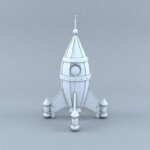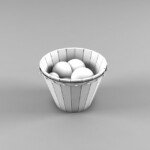Large CNC Machines: Overview
In the dynamic landscape of modern manufacturing, Large CNC (Computer Numerical Control) Machine As a giant of precision, reshapes the components of how to produce huge, complex and critical missions. With the boundaries of size and complexity in the industry – from aerospace structures and wind turbine hubs to large amounts of injection molds and heavy machinery parts – the need for machining capabilities that match these scales has never been so. This article delves into the world of large CNC machinery, explores its features, applications, and why working with experts like this Greata leading five-axis CNC machining manufacturer is crucial to success.
Large CNC machines are often defined by their spacious working envelopes, capable of handling parts of length, width and height while maintaining harsh accuracy tolerances. Unlike smaller counterparts, these behemoths are designed for rigidity and stability to offset vibration and thermal changes in the processing of substantial workpieces made of hard metals or composites.
Key Types and Applications:
- Large 5-axis gantry factory: Multifunctional peak for large components. Their moving bridge structure provides excellent stability. The 5-axis function allows for the simultaneous machining of complex geometries from almost any angle without repositioning the parts – critical for aerospace fuselage parts, engine housing, marine propellers, marine propellers and large-scale sculptural elements.
- Large horizontal diamond factory (HBM): Known for its unrivalled accuracy, it is in machining deep holes, large bearing housings and gearboxes. Their horizontal spindle orientation and rotary table are ideal for engine blocks, frame components in heavy-duty equipment, and housings for power generation equipment.
- Large vertical lathe (VTL): Specially targeted to very large diameter, short shaft workpieces such as huge flanges, turbine rotors or gears. The vertical direction uses gravity to improve stability during heavy cutting.
- Large CNC router: Although often associated with wood and plastics, industrial large CNC router tackle composites (carbon fiber, fiberglass panels), foam for molds, and even aluminum sheet manufacturing, for signage, aerospace hoods and transportation interior decoration.
Why five-axis machining changes most games:
When dealing with complex, oversized components Five-axis CNC machining Become more valuable:
- Reduced settings: Eliminating multiple settings minimizes processing errors, fixed costs, and potential damage to large heavy parts. This greatly improves overall accuracy and geometric consistency.
- Complex geometric access: Simultaneous control of five axes allows the tool to approach the workpiece from almost any direction, making complex contours, undercut angles and composite angles using a 3-axis machine would be impossible or expensive.
- Improved finish: Continuous positioning optimizes tool cutting angles, minimizes step-by-step communication and reduces the need for secondary hand completion, even on a large surface area.
- Shorter cycle times: Complex operations are done with fewer steps, and production is significantly accelerated compared to sequential 3-axis machining.
- Optimal tool lifespan: Better control over tool orientation and engagement can promote effective chip evacuation and reduce tool deflection and wear, especially for expensive large-diameter tools.
Cross-industry application:
Large CNC machining is essential for the scale and precisely merged sectors:
- Aerospace and Defense: Structural fuselage components (ribs, spars, bulkheads), engine frame, landing gear, missile housing.
- vitality: Turbine components (Hydro, Wind, Steam), generator housing, large valve, pump body of oil and gas pump, core components.
- transportation: Locomotive drivetrain parts, large marine propellers and axles, heavy truck/off-road vehicle chassis and powertrain.
- Industrial Machinery: Frame, base, gearbox, large news molds and molds are used for manufacturing.
- Mold and death: Large injection molds for automotive parts, consumer goods and composite tools.
Advantages of working with your huge CNC needs:
exist GreatWe specialize in conquering the unique challenges faced by large five-axis CNC machining. We authorize manufacturers by
- Advanced Technology: We invest in state-of-the-art 5-axis CNC machining centers designed to maximize stiffness, accuracy and power to handle the toughest materials and demanding tolerances.
- Deep manufacturing expertise: Our team includes experienced engineers and mechanics who understand the complexity of remachining – the best tool path strategy for many geometries, from vibration control and thermal management to the best tool path strategies.
- Material mastery: We have skillfully processed a number of materials including demanding aerospace alloys (titanium, inconel), hardened steel, stainless steel, aluminum, composites and engineering plastics.
- A true one-stop solution: In addition to main processing, Greatlight also offers comprehensive completion services such as grinding (including ID/OD cylindrical grinding of large holes/sweaters), precision milling and various surface treatments (painting, plating, anodizing).
- Quick customization: We do well in tailored solutions. Providing your specifications, our dedicated engineering team will work with you to ensure manufacturability and effectively deliver large parts with high precision.
- Competitive value: With optimized processes, advanced technology and scalable capacity, we offer excellent most processing at the best price without compromising quality or speed.
in conclusion:
Large CNC machinery represents the forefront of the manufacturing of a large number of high-precision components that move key industries forward. The transition to five-axis technology further unlocks unprecedented functions, allowing complex geometries to be efficiently and accurately processed with less operation. For projects that require large sizes, tolerances and complex details, it is crucial to choose the right manufacturing partner.
Great Standing at the forefront of large five-axis CNC machining, it combines powerful advanced equipment, deep technical expertise and a commitment to comprehensive service. We are not just machine parts; we work with engineers and designers to overcome manufacturing challenges and deliver excellent results.
Ready to bring your biggest, most complex and precise project to life? Contact Greatlight now for consultation and quote. Discover how our advanced 5-axis CNC capabilities and one-stop service can transform your manufacturing results to deliver at the best prices.
FAQ: Large CNC machining
Q1: Can a part usually be machined in size?
A: Our features are tailor-made to handle real large-scale jobs. We focus on parts with length and widths of more than a few meters, height/depth dimensions. A specific maximum capacity depends on the machine type – contact your project dimension for detailed confirmation.
Q2: What tolerances can be achieved in large five-axis CNC machining?
A: Implementing tight tolerances on large parts is challenging, but it requires core to our expertise. Our large five-axis equipment and strict process control allow us to maintain very tight tolerances (usually within +/- 0.0005" Or on key features, even on large components, 0.013mm). Achieving a specific tolerance always depends on the specific geometry, material, and processability. We discussed tolerant requirements in detail during the project planning period to ensure feasibility and efficiency.
Q3: Can Greatlight machines be hard to cut titanium or unreasonable materials on most?
Answer: Absolute. We have extensive experience and optimized processes for machining challenging aerospace and high-performance alloys such as titanium (2, 5, 5, 6AL-4V), Inconel (625, 718) (625, 718), Hastelloy, tool steel and hardened steel. Our expertise in powerful machines, professional tools and high-performance machining strategies is also designed for these materials, even for large ones.
Question 4: How can most of the benefits be made by using five-axis machining compared to 3-axis?
Answer: Five-axis machining greatly simplifies the generation of large and complex parts: 1) Eliminate expensive settings: Most of them are heavy and cumbersome to reposition. 5-axis machining will greatly reduce or eliminate reconstruction. 2) Increase complexity: In one setup, processing deep cavity, composite angles and complex profiles are feasible. 3) Improve accuracy: Eliminating repositioning significantly reduces cumulative errors. 4) Improve efficiency: Complex geometry is processed faster by continuously accessing all aspects. 5) Top surface finish: Optimized tool orientation can be done better on complex surfaces.
Question 5: What industries do you mainly provide in large CNC services?
A: Our large-scale CNC processing expertise serves demanding industries:
- Aerospace and Defense
- Power generation (traditional and renewable – wind, hydro)
- Oil and gas
- Heavy machinery and industrial equipment
- Transport (ocean, rail, heavy truck/off-road)
- Large-scale mold manufacturing
Question 6: Do you provide completion services other than the initial CNC machining?
A: Yes, Greglight provides a comprehensive one-stop service. In addition to the main 5-axis machining, our features include:
- Secondary milling operation
- Precise grinding (surface, most cylindrical ID/OD)
- Styling and finishing (drilling, rotating, boring)
- tapping
- Various completed services such as painting, passivation, electroplating, anodization (treated under our supervision by reviewed partners).
Q7: How long does it usually take to obtain large custom-made parts?
A: The production time of large parts varies greatly depending on part size, complexity, materials, required tolerances and current workshop capabilities. However, Greatlight prioritizes efficiency and fast turnaround. Our expertise and advanced equipment enable us to provide faster lead times than many competitors in similar projects. After reviewing your specific requirements, we provide a clear schedule.
Q8: What file format is best to provide when requesting a quote for large and complex parts?
A: We recommend providing native 3D CAD files (e.g., steps, IGES, SOLIDWORKS, CATIA) as well as detailed 2D pictures (Preferred to PDF). Drawings should clearly specify key dimensions, tolerances (GD&T (if applicable), material specifications, surface surface requirements and any special instructions. For exceptionally large or complex files, please contact us for the preferred transfer method.

















